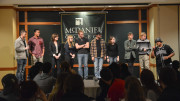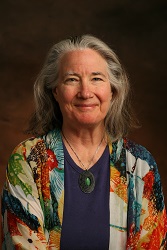The granddaughter of freed slaves, Ethel Payne was born in Chicago, Illinois, in 1911. Better known as the “First Lady of the Black Press,” Payne was the fifth child in a large family, and from an early age she demonstrated a passion for reading. Although she was a mediocre student, she showed talent in the writing arts, especially journalism, having a fascination for it at a time when there were few black and female journalists.
She graduated from the Chicago Training School in 1934, after which she worked as a matron in the State Training School for Girls in Geneva, Illinois, and as a nursery school teacher in settlement houses and public schools in Chicago.
Her big break into journalism came in 1948 when, while working as a military service social club hostess in Japan, a Defender reporter was allowed to read her journal, which was later used to write an article called “Says Japanese Girls Playing GIs for Suckers, ‘Chocolate Joe’ Used, Amused, Confused.”
When she returned to the United States, she was hired by the Defender, where she worked writing articles about adoption by black families among other topics. Within the Defender she was known as the “glove-trotting reporter” for her often voyages.
Her list of accomplishments is quite the feat, including being the first black female radio and television commentator and the first black reporter to cover the Vietnam War, among others. She also became notorious for interviewing great figures such as Martin Luther King, Jr., Nelson Mandela, and Senator John F. Kennedy, among many others.
Perhaps her most famous moment, however, took place on July 7, 1954, where on a press conference she asked President Dwight D. Eisenhower a question regarding the administration’s support on the desegregation of school across America after the Brown vs. Board of Education Supreme Court decision, which surprisingly was not well received by President Eisenhower.
With her strong will and passion to report on issues such as racial inequality, among other controversial topics, Payne paved the way for many other journalists of color to come. To read more about her life, you can read her biography here, or you can check these articles by The Washington Post and The New York Times.



